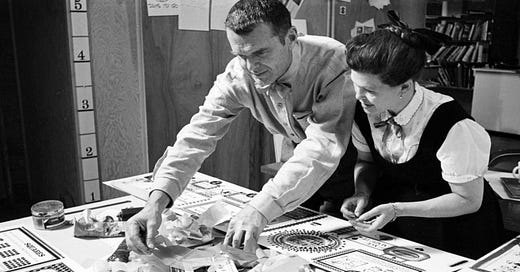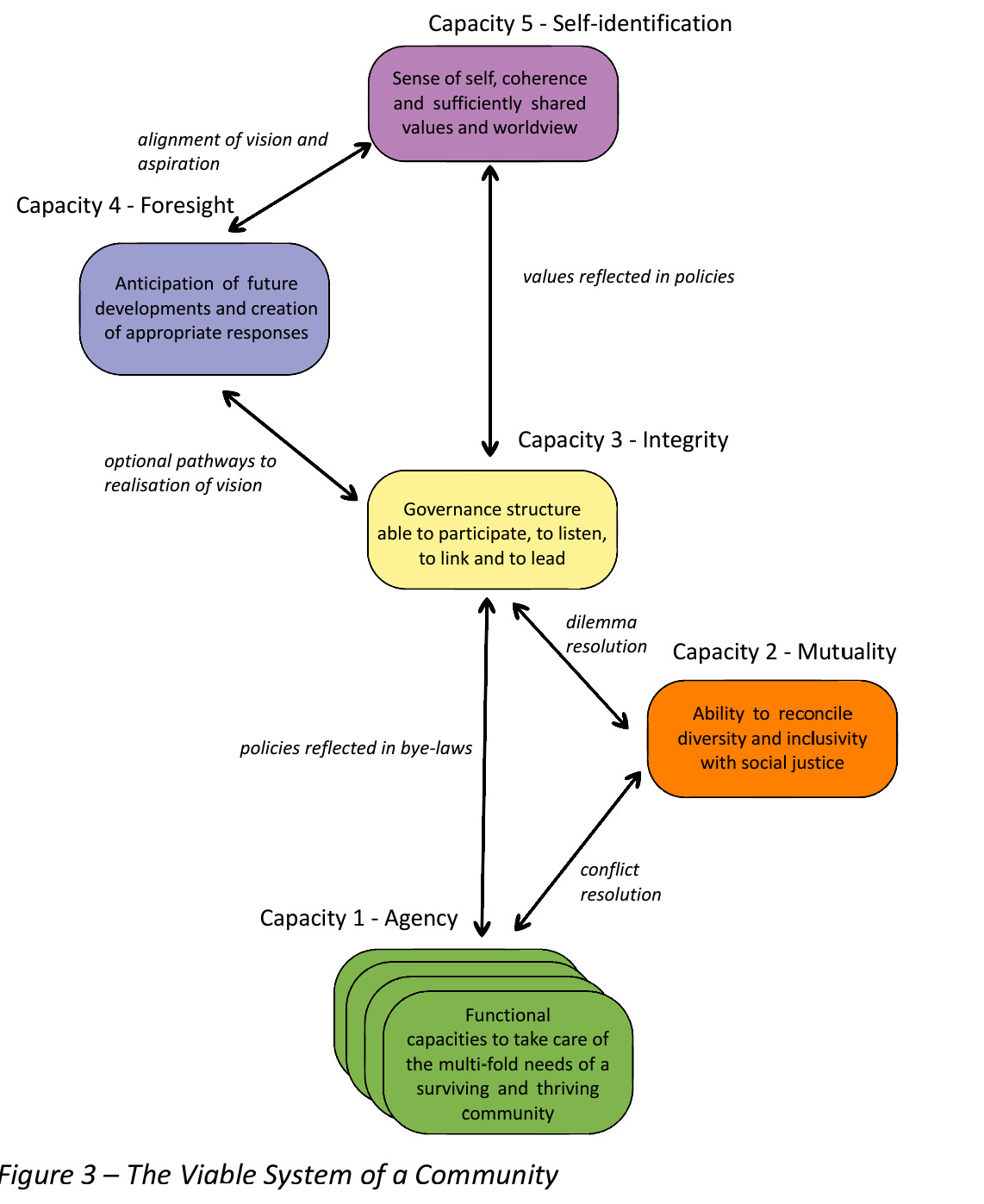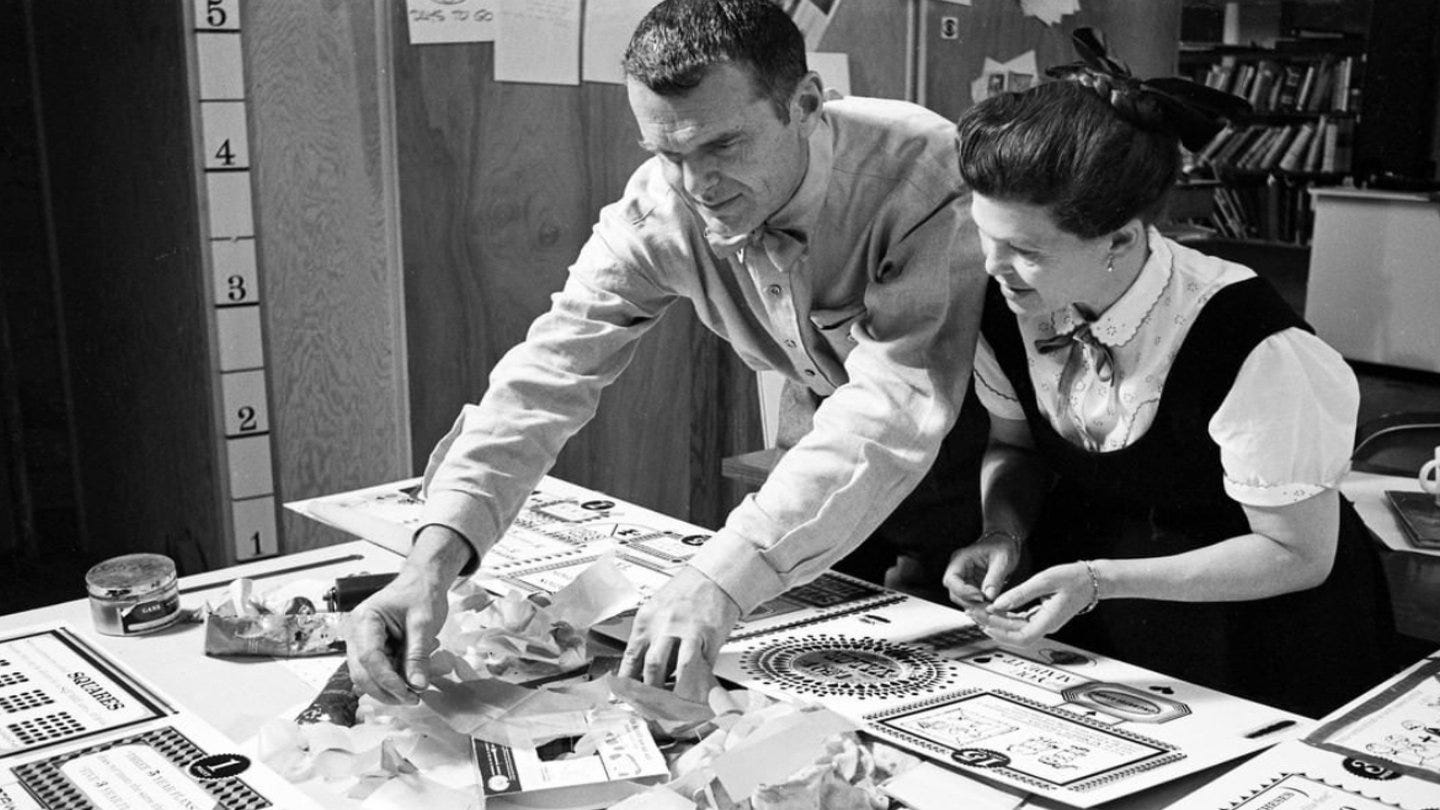Welcome to Just Two Things, which I try to publish daily, five days a week. Some links may also appear on my blog from time to time. Links to the main articles are in cross-heads as well as the story. Recent editions are archived and searchable on Wordpress. And a reminder that if you don’t see Just Two Things in your inbox, it might have been routed to your spam filter.
1: Making communities work
I was researching an article at the weekend, and ended up reading an piece ‘compiled’ by the systems thinking and futurist Anthony Hodgson on transformative resilience that included an intriguing model of how a sustainable democratic organisation might work.
I have worked with Tony on a number of occasions and also helped to popularise the work he had done with Bill Sharpe on Three Horizons, and also to apply it to scenarios analysis. He is in his eighties now, but managed to work with a rich group of thinkers when younger, including David Bohm, Stafford Beer, and J G Bennett. In different ways, these have influenced his own approaches to applying systems work in different settings, while also making them more accessible.
In particular, the organisational model in the paper, which dates from 2010, was designed as a way to make Stafford Beer’s rich but difficult Viable System Model [VSM] more usable. For those who know less about Stafford Beer: he was a leading cybernetician who also worked as a senior manager in a number of businesses in the 1950s and 1960s, who also sought to find ways to use cybernetic thinking to democratise decision making.
Here’s Tony’s version of the VSM, from the paper he compiled (his word) from a project run by the International Futures Forum and RSA Scotland.
(The Viable System of Community. Anthony Hodgson adapted from Stafford Beer. From ‘Transformative Resilience’, IFF/RSA)
So let’s have a quick walk through this model. (There’s a lot more in the paper on the relationship between systems thinking and transformative resilience).
The five elements, or capacities, of the model are, from the top:
- Self-identification
- Foresight
- Integrity
- Mutuality
- Agency
Self-Identification, which might also be thought of as Identity, is about a shared sense of self, underpinned by a coherent set of values and worldviews.
Foresight is the ability to scan the environment, anticipate developments, and formulate responses to these. (Viable organisations need to learn more quickly than their external environment is changing).
Integrity is the governance structure of the community, which is able to listen, to participate, to connect things together, and to lead when necessary. It is the only element that is connected to all of the others.
Mutuality is the ability of the community to reconcile diversity and inclusivity with social justice (and therefore in a way that seems fair to members of the community).
Agency is about the ability to function—the capabilities needed to take care of a thriving community.
I’m still thinking this through, but I also wonder if these five components can also be thought of as:
- Culture
- Strategy
- Process (and permission?)
- Decision
- Execution
The six connections in the diagram are also important. (Tony’s diagram tags these, and there’s a bit more in the paper, but I’ve added a gloss here.) These need to be both rigid enough to provide structure, while also flexible enough to absorb and manage stress (for example as a result of conflicts between the different elements of the community or organisation.
From Tony’s comments in the paper, the link between Identification and Foresight, at the top, is about aligning responses to external change to the values and worldview of the organisation.
The connection between Identification and Integrity is about ensuring that processes and practices are aligned with values and worldviews, while the connection between Foresight and Integrity is about ensuring a link between that scanning and framing of response to the actual decision processes of the community.
Working down, the connection between Mutuality and Integrity is about making sure that decisions reflect the entire community—there’s something about representation and participation in here as well. The connection between Integrity and Agency aligns actual outcomes, actions and behaviours with the operating principles of the organisation.
Finally, the connection between Mutuality and Agency should align (and correct for) issues when actions taken—on the ground, under pressure of time, resources, and so on—aren’t completely aligned with the interests of the whole community.
A couple of other notes from the Viable System Model. The first is that the word ‘viable’ and ‘system’ are important. All these elements need to be alive if the system is going to be viable. The second is that a VSM is recursive: a viable system model of (say) a bioregion will contain within it a VSM of a town inside the bioregion, which will contain within it a VSM of its different neighbourhoods, and so on.
I’m still thinking about this—I literally stumbled on it on Saturday morning while looking for something else online. But I know how hard it can be to design effective operating models for groups and organisations, especially when values matter. And it seemed to me that this might help with that difficult process.
2: Democratising design
(Ray and Charles Eames. Photo: Eames Office LLC/Eames Institute)
Ray and Charles Eames are venerated designers, and with good reason. Many of the things they designed have become standards. But a piece in Quartz by Anne Quito on the recently opened Eames Institute says that the Institute sets out to debunk many of the myths of ‘design genius’ that surrounds designers as good as the Eames, and the design profession more generally.
As the article reminds us of their work:
Working with Herman Miller in the US and later Vitra for the European market, the Eameses wanted to make good design available to the masses or “the best for the most for the least,” as they put it. Their chairs, furniture, toys, graphics, and one classic lounger and ottoman became emblems of American modern design.
(Stacked children’s chairs, 1945. Photo: Eames Office LLC/ Eames Institute)
The Institute has been curated by their youngest grand-daughter, Llisa Demetrios, who is both a sculptor and the trained curator:
In opening the Eames archive to the public, Demetrios embraced a forward-looking and rather radical message: to debunk the notion that her beloved grandparents were geniuses. “Their genius maybe wasn’t genius after all,” she says. “Maybe it was just a lot of hard work and dedication.”
By Demetrios’ account, there was a whole philosophy sitting behind this perspective:
“Ray and Charles didn’t believe in the notion of the gifted few,” Demetrios says. “They believed that you got good at what you liked to do through practice, exploration, understanding, and effort.”... “The biggest misconception about Ray and Charles is that people think of them as designers with a capital D,” Demetrios tells Quartz. “They actually called themselves tradesmen; people came to them with a problem to solve.”
The full name of the Institute is the Eames Institute of Infinite Curiosity, and for the moment—although the Institute opened in April—it’s a bit unclear what it consists of. There’s a website, certainly, and something like 20,000 artefacts that have been stored in boxes, and a building that isn’t big enough for these, with plans for a bigger building.
The project has investment from Airbnb co-founder Joe Gebbie, for whom the Eames’ were a source of inspiration when he was a student at Rhode Island School of Art and Design:
(R)eading about how the Eames came up with the molded plywood chair (LCW) led him to change majors… “Charles and Ray democratized design and I thought that was way more exciting.”
One of the things that the Institute has done is flip the Eames’ names so that Ray gets the credit she deserves as a creative equal—rather than being patronised as she was routinely in accounts of their work:
As the article notes:
Ray, an accomplished painter and founding member of the American Abstract Artists was often depicted as her husband’s subordinate, much like Aino Aalto was to Alvar Aalto and Denise Scott Brown to Robert Venturi..
For Demetrios, this small change is a way of better honouring the spirit of their collaboration:
“Just by saying it differently and reframing it a little bit gives us a new chance to draw out the specialness of Ray. When I was growing up I remember Charles would always say, ‘anything I can do, Ray could do better’. “
Updates and notes
I’ve been sceptical about the metaverse from time to time here. The technology is still complicated and underdeveloped, and there’s questions about people’s enthusiasm for wearing big clunky headsets. So perhaps I wasn’t completely surprised to read in TechCrunch that Meta, as Facebook insists on calling itself, is scaling back its plans for its augmented reality (AR) glasses, and on its Consumer Portal. It’s under pressure from investors given slowing revenues and little immediate prospect of a commercial market.
And on dystopias, which I wrote about on Friday: thanks to Charles Leadbeater for also recommending The Age Of Miracles by Karen Thompson Walker, in which the world starts dystopically slowing down. There are reviews on goodreads.
j2t#329
If you are enjoying Just Two Things, please do send it on to a friend or colleague.





